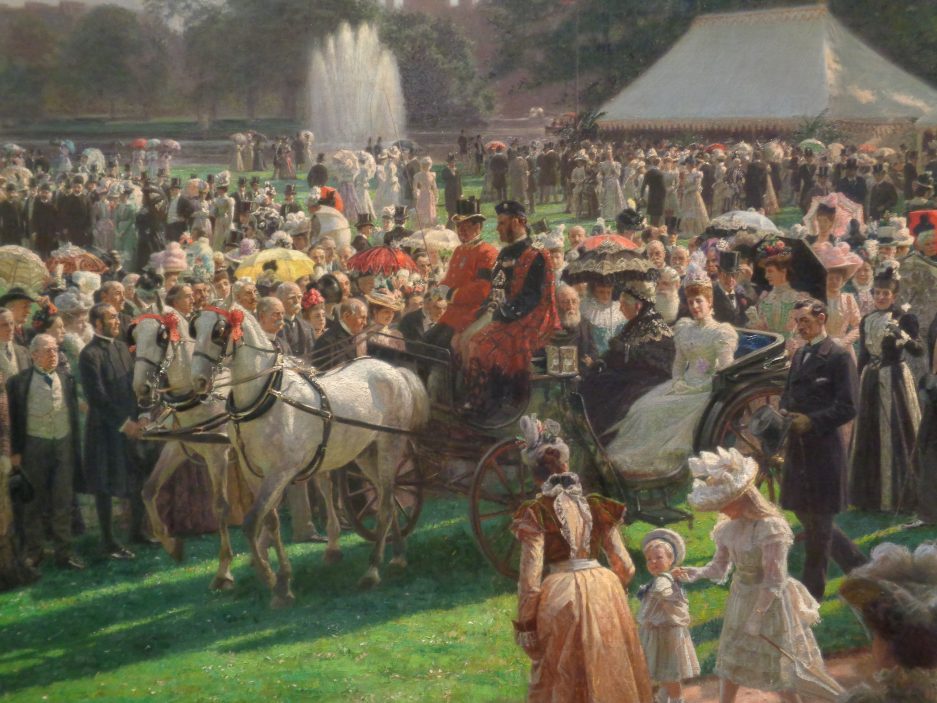WARNING: Might contain some spoilers for the upcoming series
With the last series of Downton Abbey about to be telecast and the muted response that greeted the announcement of series 6 being commissioned and subsequently being the last, it’s a far cry from the time when any announcement from ITV about Downton was greeted with anticipation. Now every news story since that announcement has been at best greeted with a shrug and at worst with indifference.
Now that the trailer and a preview clip have been released, it’s clear that series 6 won’t be any different from its predecessors. Despite the manipulative use of the song Time to Say Goodbye, if one pays close attention to the trailer and the preview clip, then there are enough indications that series 6 will be condemned to another Groundhog Day as far as the narrative is concerned.
In an earlier blog, I have argued that Downton Abbey finally jumped the shark with Matthew’s death and series 4 and 5 has shown how the narrative has suffered as a result. Instead of presenting a family struggling to cope with economic forces beyond their control we were shown default clichés of flappers, jazz, cocktails, parties, fashion and the never-ending soap opera sagas featuring romance, rape and murder; all being strung out and done to death even as the plot twists become sillier and sillier.
Apart from Matthew’s death resulting in the narrative falling apart there is another aspect I believe is responsible for why Downton Abbey has been stuck in a Groundhog Day like stasis since series 3 and it’s the fact that Robert is still part of the dramatis personae.
The whole raison d’etre of the programme has always been to have Matthew succeed as earl with Mary as his countess. A decent writer would have killed Robert off as soon as possible and have the dawn of a new era with a new earl at the helm – or if series 3 was meant to be the last, have the programme end with a new earl and his family at the Abbey.
However since the outcry that greeted both the demise of Lady Sybil and Matthew Julian Fellowes and the producers have seemingly been wary about upsetting the fans; especially the hard core ones. Hence the constant bleating of “no deaths” every time a new series is announced. I find this baffling – sure, both deaths were handled in the most clichéd and unoriginal way possible but death is a part of life and just as in real life, death can help a narrative move forward; especially as both writer and producers have claimed that at the heart of the narrative is the Abbey itself. Unfortunately after series 3 the programme stopped being about the Abbey and continuity and became about emotional relationships – almost as if Dan Stevens’ departure derailed whatever narrative plan there was and Julian Fellowes never managed to get back on track because Matthew Crawley succeeding as earl was the only plan he had.
I’ve always believed that as early as possible Robert should have gone to make room for Matthew. Since the entail story line in series 1 or even after series 2 it was clear that there was really no compelling reason for Robert to remain in the narrative; the fact that his character underwent a bizarre metamorphosis from the decent, kind, fairly liberal and well-meaning but not very bright man to the reactionary buffoon, idiot and snob who slavishly grovels to his wife (the latter at least in series 4) shows that Fellowes has no clue with what to do with a character who has clearly overstayed his welcome and crucially, that Robert is a character with whom the writer has no sympathy.
And this explains why the programme since series 3 has been stuck in a loop. With Robert still alive, everyone is trapped in the same old situations over and over again. How will the Abbey be run now they are dependent on Matthew’s money and Mary is a part owner? Will Robert change? – a theme not so much touched on as beaten into us with the leaden monotony of a Salvation Army drum. Had he been killed off for instance early in series 4 not long after Matthew’s own demise, it would have given the narrative a fresh impetus especially as the new earl is only a toddler. How will the estate survive? How will the family cope with two massive death duties hanging on them like the sword of Damocles and will Mary be any better at running the estates than her father? (a question that I suspect demands the answer no).
But there is none of that. Instead we get the same old plot lines repeated ad nauseam with the twists become more implausible than the last. More than anything this lends more weight to my view that Downton Abbey should have ended with series 3 and Matthew as earl.





